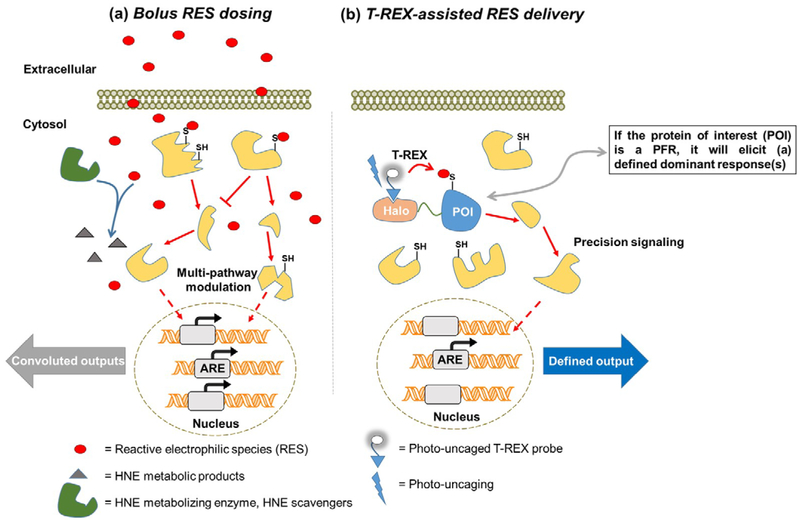Figure 2.
(a) Studying RES signaling following bulk exposure of RES from outside of cells. Bolus RES dosing leads to modification/modulation of multiple signaling targets/pathways simultaneously. Correlating the resulting phenotypic output to on-target modification is often challenging following bulk RES exposure. (b) Interrogating precision RES signaling by T-REX. A functional Halo-POI fusion construct is expressed in live cells, worms, or fish. Treatment with a bio-inert cell/worm/fish-permeable photocaged-RES (i.e., T-REX probe that can deliver a specific RES) results in stoichiometric covalent binding of the photocaged-RES to Halo. After washing away the excess T-REX probe, photouncaging liberates a stoichiometric amount of RES within the microenvironment of Halo-POI protein. Provided the POI is a KPS to the RES in question, some level of substoichiometric RES-modification of the POI results. If the POI is a PFR, the resultant modified POI is sufficient to elicit (a) defined dominant response(s). The measured phenotypic responses can be directly related to the functional modification/target occupancy of POI by the RES. Validations using split construct and/or hypomorphic mutant(s) (see text and references cited therein) as negative controls, in addition to built-in T-REX controls (namely, light alone, T-REX-probe alone, vehicle alone) must be done in parallel to rule out any off-target responses.

